#IX century
Photo

Saint Richardis, also known as Richgard, Richardis of Swabia and Richarde de Souabe in French (c. 840 – 18 September, between 894 and 896 AD), was the Holy Roman Empress as the wife of Charles the Fat. She was renowned for her piety and was the first abbess of Andlau. Repudiated by her husband, Richardis later became a Christian model of devotion and just rule. She was canonised in 1049.
#Saint Richardis#Richardis#Richardis of Swabia#House Ahalolfinger#IX century#statue#art#arte#photo#photography
76 notes
·
View notes
Text


La Reine Margot - Charles IX, Henri de Navarre, and Marguerite de Valois
I.III - Un roi poète
I.XXXI - La Chasse à Courre
II.IV - La Nuit des Rois
#La Reine Margot#Alexandre Dumas#Charles IX#Henri de Navarre#Henri IV#Marguerite de Navarre#new obsession just dropped welcome to the era#Charles is callous and sickly and pathetic so naturally he's a blorbo#he can excuse religious war crimes but he draws the line at his sexy cool protestant brother in law ♥️#i havent even designed the main gays of this book...it has so much to offer#16th century#my art
4K notes
·
View notes
Text

Romantic Landscape, Ruins in the Moonlight
(possibly member of the Pether family, active c.1780–1865, oil on canvas, 50 x 60.8 cm, Leicester Museum & Art Gallery, England)
1 note
·
View note
Text


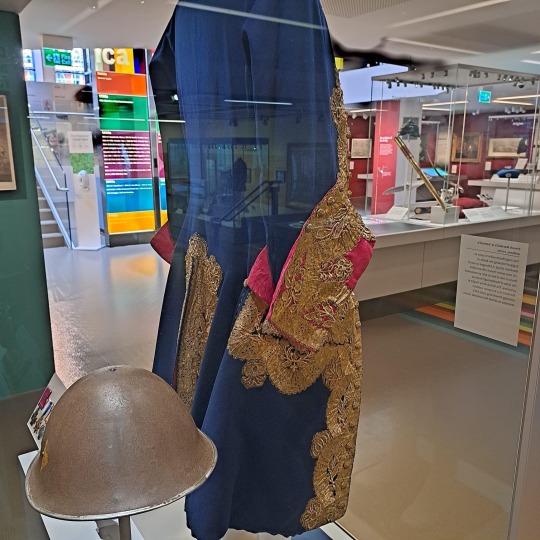
The uniform of a senior French general, captured at the battle of Blenheim in 1704 and now forming part of the exhibition at the National Army Museum.
#history#british army#french army#military history#18th century#battle of blenheim#blenheim#duke of marlborough#marlborough#war of the spanish succession#louis ix
361 notes
·
View notes
Text

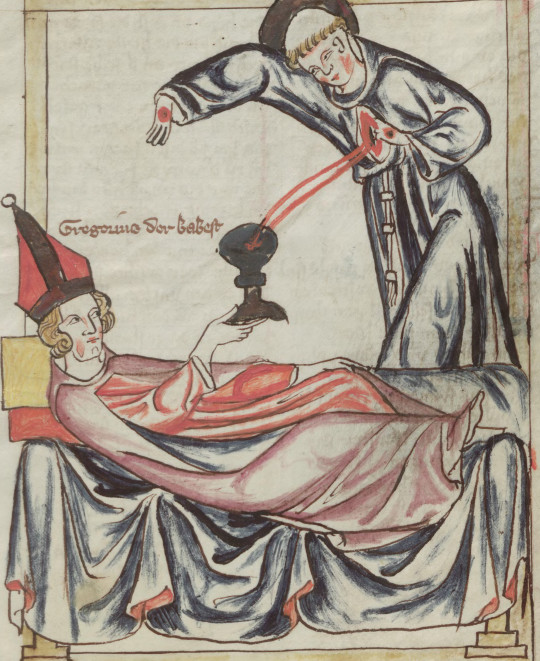
pope gregory ix catching blood emitted from the side wound of st. francis who appears to him in a vision
in a vita of st. francis of assisi, illuminated manuscript, germany, late 14th c.
source: Kraków, Biblioteka Jagiellońska, Ms. Berol. germ. quart. 357. p. 41
#medieval art#14th century#st francis#pope gregory ix#sidewound#christian iconography#illuminated mauscript#medieval#saints
440 notes
·
View notes
Photo



A 14th-Century Papal Bull Discovered in Poland
A lead seal found in northwestern Poland has been identified as a rare papal bull from the reign of Pope Boniface IX (1350-1404). It was discovered in 2021 north of a former cemetery in the village of Budzistowo by metal detectorists with the PARSĘTA Exploration and Search Group. Dirt and corrosion made it difficult to identify at first. Specialists in Kraków cleaned and conserved it, revealing the inscription that marks it as the seal of Boniface IX.
Bullae were round seals, usually made of lead, that were hung on silk strings affixed to the parchments of official proclamations and documents. They were legally valid and highly recognizable signatures. Metallurgic analysis found that this one was made of pure lead derived from galenite deposits in Cyprus, Sardinia, Greece and Spain. This composition indicates the bull is original, not a later copy.
The reverse inscription reads: BONI/FATIUS/PP:VIIII. The obverse features the images of Saint Peter and Saint Paul identified by the inscription SPASPE above their heads.
In the 9th century, what is now Budzistowo was founded by Pomeranian tribes as the fortified settlement of Kołobrzeg. The settlement was on the Parsęta River 2.5 miles from its mouth on the Baltic Sea, and was rich in salt, fish, iron ore and arable land. The Polish Piast dynasty conquered the area in the 10th century, and Kołobrzeg grew into a regional center of the trade in salt and salt-cured fish.
It became a seat of a bishopric in 1000, but the area would only become thoroughly Christianized in the 12th century. St Mary’s church was built at that time. It was converted into an abbey in the 13th century when German settlers founded a new town of Kołobrzeg on the Baltic and the former Pomeranian stronghold was renamed Old Kołobrzeg. A monastery for Benedictine nuns was then built in Old Kołobrzeg.
Historians hypothesize that the bull was kept at the Benedictine monastery, based on a reference in the comprehensive history of Kołobrzeg written by the 18th century Pastor Johann Friedrich Wachsen. He recorded that in 1397, Boniface issued a letter of indulgence for the Benedictine nuns. It guaranteed a full indulgence to anyone who visited the local church.
With no relic relating to the monastery surviving to this day, [Dr Robert Dziemba, the head of the Kołobrzeg History Department,] says that if it is proved that this bull is the same one referenced by Wachsen it would be nothing short of “a historical revelation”. […]
Dziemba speculates that this particular papal bull may have been lost in the 16th century.
“After the 1534 congress in Trzebiatów introduced Lutheranism to Pomerania, the document simply lost its value,” he said. “Maybe the bull was thrown out when the duchy took control of the monastery as a result of this congress – but maybe it was lost centuries later. We will probably never know when and why it was discarded.”
The conserved bull has gone on display in the Museum of Arms in Kołobrzeg.
#A 14th-Century Papal Bull Discovered in Poland#Pope Boniface IX#lead seal#metal detecting#archeology#archeolgst#ancient artifacts#history#history news#ancient history#ancient culture#ancient civilizations#medieval history#middle ages#dark ages
93 notes
·
View notes
Text
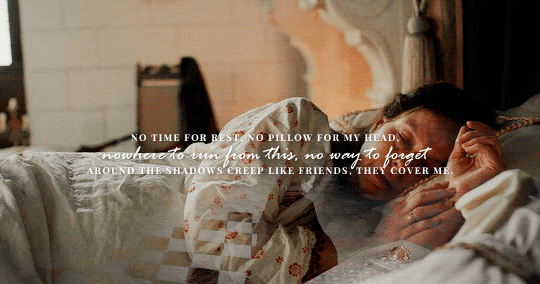


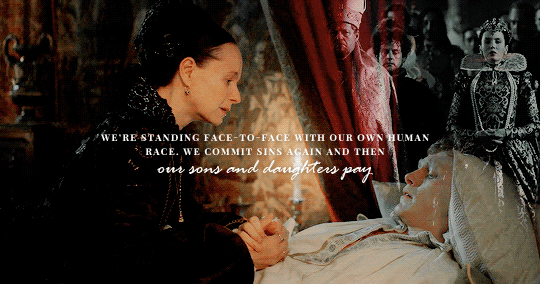


For the heirs to come, be brave…
And meet me on the battlefield.
#historyedit#theserpentqueenedit#perioddramaedit#catherine de medici#*mine#henri iii#charles ix#marguerite of france#francis ii#16th century
167 notes
·
View notes
Text
youtube
LA ABADESA (2024)
Synopsis
In the 9th century, Emma of Barcelona (c. 880-942), a 17-year-old girl, is named abbess in order to repopulate and Christianize border territories in 897. Upon arriving at the abbey, she will have to overcome the mistrust aroused by a woman determined to fulfill her mission, which will lead her to confront nobles, like her brother Count Guifré II Borrel of Barcelona (874-911), peasants and the nuns themselves. Despite everything, Emma will show that it is possible to challenge established power structures. Although she will pay a high price to get it...
Emma is willing to carry out the commission of her deceased noble father, Count Guifré I of Barcelona, Guifré el Pilós (840-897), founder of the House of Barcelona: convert the abbey that he founded in 885, the Monastery of Sant Joan de les Abadesses, for which she is now responsible into the engine of change and transformation of a society that comes down. She must help with all her resources to help the lands that are emptied due to hunger caused by border wars, which in turn are a consequence of the ambitions of the feudal lords of the area.
Emma acquired small or large properties with which the monastery came to have a territory equivalent to that of a county. Her sovereignty was also similar to that of a countess: by concession from her father, her domains were exempt from all interference from the neighboring counts, whom she knew how to oppose with resistance.
On cinemas: Friday 22 March
Filming began in January 2023 at the Loarre Castle, and included scenes filmed at the Turó de la Seu Vella, until concluding at the end of February 2023.
Main cast
Emma of Barcelona - Daniela Brown
Eloisa - Blanca Romero
Guifré II Borrel of Barcelona - Carlos Cuevas
Eduard - Ernest Villegas
Odón - Oriol Genís
Bishop Gotmar of Vic– Joaquín Notario
Clara-Berta Sánchez Bajona
Melisenda - Anäel Snoek
Elvira- Olivia Auclair
Data sheet
Script and direction: Antonio Chavarrías
Produced by: Antonio Chavarrías, Jose María Morales, Miguel Morales, Mónica Lozano
Photography direction: Julian Elizalde
Editing: Clara Martínez Malagelada
Music: Ivan Georgiev
Casting: Irene Roqué, Carla Bisart, Sara Bisart, Elena Gómez Zarzuca and Doriane Flamand
Direct sound: Elsa Ruhlmann
Sound editing: Corinne Dubein
Blends: Emmanuel de Boissieu
Art direction: Irene Montcada
Costumes: Catherine Marchand and Pau Aulí
VFX: Natacha Brohan
Assistant director: Falele Ygueravide
Production direction: Anna Boneta
Executive producers: Alba Bosch-Durán, Flavia Biurrun and Jennifer Ritter
Co-producer: Huber Toint, Alex Verbaere, David Claikens, Samuel Feller
Production of Oberon Media, Wanda Films, Icono 2020, Saga Film, RTVE and TV3.
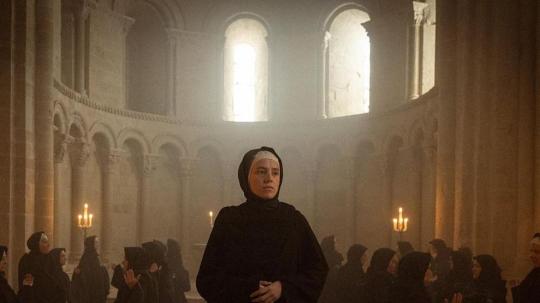
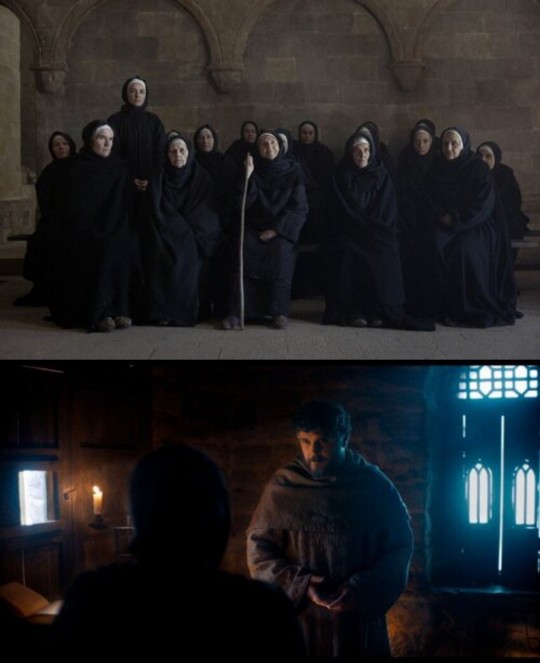
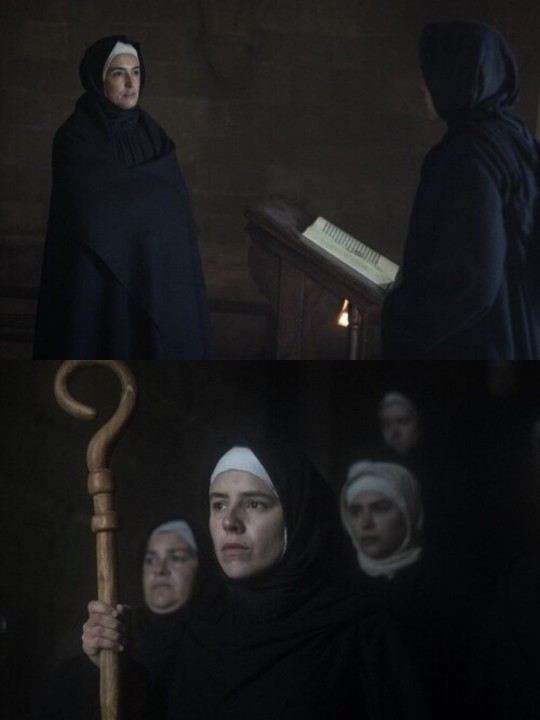
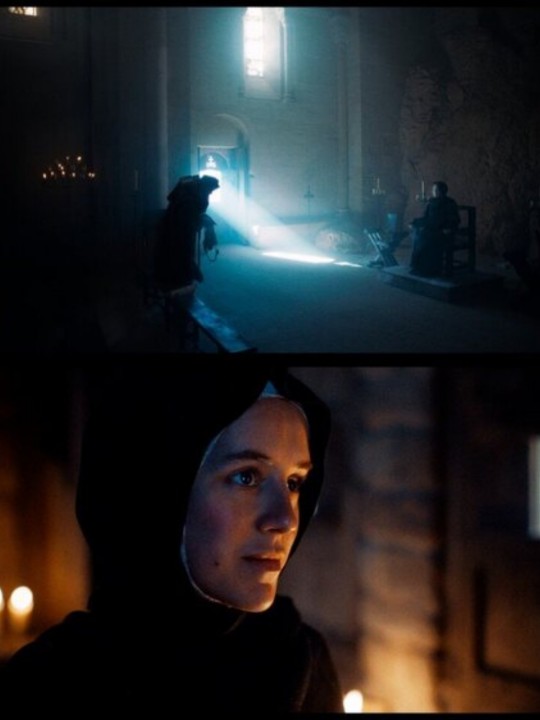
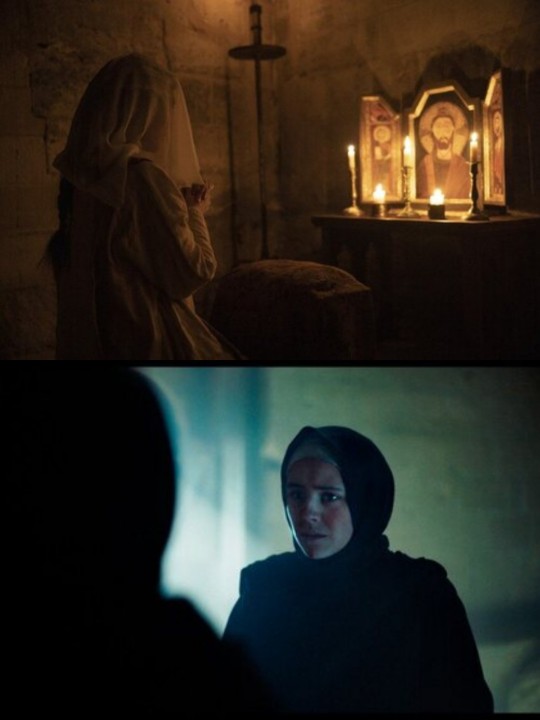




Poster

(Based on a true story/ Based on a true woman)
#the abbess#la abadesa#la abadesa 2024#period dramas#films#emma of barcelona#guifré ii borrel of barcelona#bishop gotmar of vic#antonio chavarrías#daniela brown#blanca romero#carlos cuevas#ernest villegas#oriol genís#joaquín notario#anäel snoek#9th century#berta sánchez bajona#olivia auclair#emma de barcelona#guifré ii borrel de barcelona#guifré ii de barcelona#guifré ii of barcelona#guifré i of barcelona#guifré i de barcelona#guifré el pilós#Sant Joan de les Abadesses#siglo ix
10 notes
·
View notes
Text
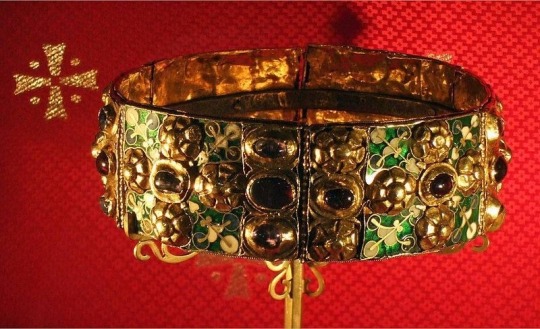
Ostrogothic and Carolingian ring, V-IX century, gold, gems, enamel and metal.
Monza Cathedral Museum and Treasure, Italy.
15 notes
·
View notes
Photo
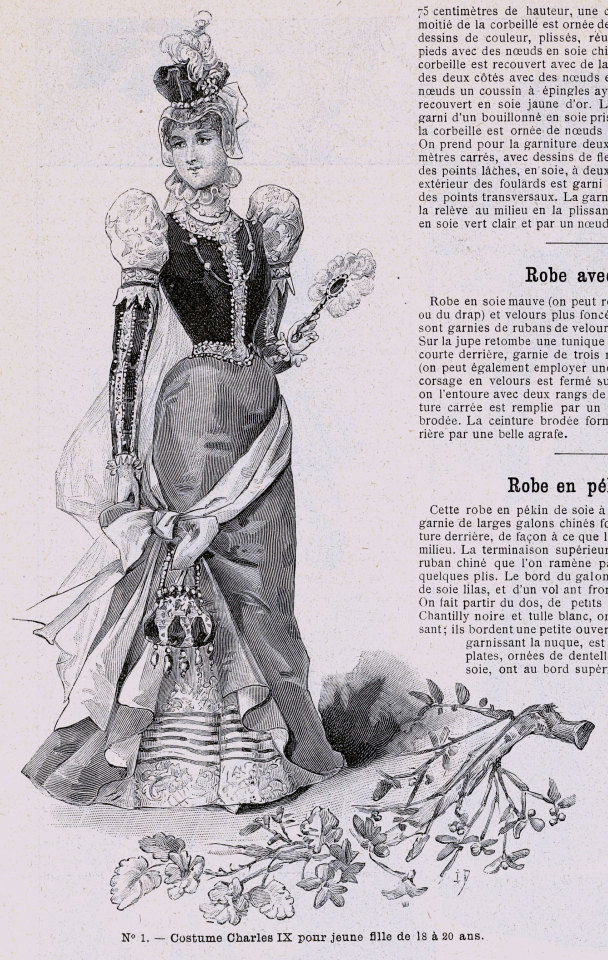
La Mode illustrée, no. 6, 5 février 1899, Paris. No. 1. — Costume Charles IX pour jeune fille de 18 à 20 ans. Ville de Paris / Bibliothèque Forney
No. 1. — Costume Charles IX pour jeune fille de 18 à 20 ans. — Corsage de velours grenat avec galon d'or: bouffant en brocard jaune paille, manches longues en velours grenat et galon d'or, collerette de gaze blanche ; jupe de dessus en grosse soie vieux rose relevée sur le côté par une écharpe de soie changeante bleu et rose; jupon de brocard paille, avec plusieurs rangs de lacet d'or.
Toque de velours grenat; voile de tulle.
—
No. 1. — Charles IX costume for young girl from 18 to 20 years old. — Garnet velvet bodice with gold braid: bouffant in straw yellow brocade, long sleeves in garnet velvet and gold braid, collar of white gauze; overskirt in coarse old rose silk raised on the side by a changing blue and pink silk scarf; straw brocade petticoat, with several rows of gold lace.
Garnet velvet toque; tulle veil.
#La Mode illustrée#19th century#1800s#1890s#1899#periodical#fashion#fashion plate#retouch#description#Forney#dress#costume#masquerade#Charles IX#velvet#bouffant#brocade#silk#veil#tulle
37 notes
·
View notes
Photo

The new Æthelflaed statue outside Tamworth Railway Station, erected to commemorate 1,100 years since her death in Tamworth. Her spear points visitors towards the town centre and Tamworth Castle.
Æthelflæd, Lady of the Mercians (c. 870 – 12 June 918) ruled Mercia in the English Midlands from 911 until her death. She was the eldest daughter of Alfred the Great, king of the Anglo-Saxon kingdom of Wessex, and his wife Ealhswith.
Æthelflæd was born around 870 at the height of the Viking invasions of England. By 878, most of England was under Danish Viking rule – East Anglia and Northumbria having been conquered, and Mercia partitioned between the English and the Vikings – but in that year Alfred won a crucial victory at the Battle of Edington. Soon afterwards the English-controlled western half of Mercia came under the rule of Æthelred, Lord of the Mercians, who accepted Alfred's overlordship. Alfred adopted the title King of the Anglo-Saxons (previously he was titled King of the West Saxons like his predecessors) claiming to rule all Anglo-Saxon people not living in areas under Viking control. In the mid-880s, Alfred sealed the strategic alliance between the surviving English kingdoms by marrying Æthelflæd to Æthelred.
Æthelred played a major role in fighting off renewed Viking attacks in the 890s, together with Æthelflæd's brother, the future King Edward the Elder. Æthelred and Æthelflæd fortified Worcester, gave generous donations to Mercian churches and built a new minster in Gloucester. Æthelred's health probably declined early in the next decade, after which it is likely that Æthelflæd was mainly responsible for the government of Mercia. Edward had succeeded as King of the Anglo-Saxons in 899, and in 909 he sent a West Saxon and Mercian force to raid the northern Danelaw. They returned with the remains of the royal Northumbrian saint Oswald, which were translated to the new Gloucester minster. Æthelred died in 911 and Æthelflæd then ruled Mercia as Lady of the Mercians. The accession of a female ruler in Mercia is described by the historian Ian Walker as "one of the most unique events in early medieval history".
Alfred had built a network of fortified burhs and in the 910s Edward and Æthelflæd embarked on a programme of extending them. Among the towns where she built defences were Wednesbury, Bridgnorth, Tamworth, Stafford, Warwick, Chirbury and Runcorn. In 917 she sent an army to capture Derby, the first of the Five Boroughs of the Danelaw to fall to the English, a victory described by Tim Clarkson as "her greatest triumph". In 918 Leicester surrendered without a fight. Shortly afterwards the Viking leaders of York offered her their loyalty, but she died on 12 June 918 before she could take advantage of the offer, and a few months later Edward completed the conquest of Mercia. Æthelflæd was succeeded by her daughter Ælfwynn, but in December Edward took personal control of Mercia and carried Ælfwynn off to Wessex.
Historians disagree whether Mercia was an independent kingdom under Æthelred and Æthelflæd but they agree that Æthelflæd was a great ruler who played an important part in the conquest of the Danelaw. She was praised by Anglo-Norman chroniclers such as William of Malmesbury, who described her as "a powerful accession to [Edward's] party, the delight of his subjects, the dread of his enemies, a woman of enlarged soul". According to Pauline Stafford, "like ... Elizabeth I she became a wonder to later ages". In Nick Higham's view, medieval and modern writers have been so captivated by her that Edward's reputation has suffered unfairly in comparison.
83 notes
·
View notes
Text

All of my friends really like my Monomachos design, he's definitely the most popular XD
#constantine monomachos#constantine ix monomachos#byzantium#byzantine empire#byzantine emperor#11th century#history art#digital art#roman tag#greek tag#twttwba
15 notes
·
View notes
Text

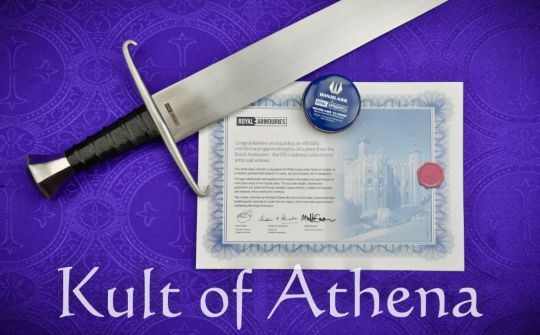


Windlass Steelcrafts – Royal Armouries Collection – Single-Edged Arming Sword
Royal Armouries Sword IX.2638. A single-edged arming sword of the mid-15th century, reputedly to come from the site of the Battle of Castillion, near the River Garrone (France) in 1453 and purchased by the Royal Armouries in 1984. A group of over 80 swords is said to have been recovered from the same spot.
The sword has a single-edged blade, of wedge cross-section, having a false edge on the back of the blade near the tip. The blade is remarkably wide and thin, with a very acute edge geometry leading to a fine edge. The crossguard quillons end in curled tips to retain an opponent’s blade, the asymmetrical grip is located towards the back edge, and the squat scent stopper pommel makes the short grip comfortable to hold. This sword feels very nimble, and it is deceptively light compared to its width, due to the thinness of the blade and distal taper.
This replica is crafted with a hand-forged blade by an experienced, skilled blacksmith using modern 1080 high-carbon steel that is fully tempered and is distally tapered for proper weight distribution. The sheath is made with a wood body and covered with leather. The tip is reinforced with a brass chape that features ornate cut-outs and an acorn tip. At the throat, the leather extends upward and covers part of the guard at the ricasso. Includes a certificate of authenticity on heavy stock, a tin of Windlass Classic Wax, and a polishing cloth. Made by Windlass Steelcrafts, the original can be seen in the Royal Armories Collection, Object Number IX.2638.
#Kult of Athena#KultOfAthena#New Item Wendesday#Windlass Steelcrafts#Royal Armouries Collection#Single-Edged Arming Sword#Arming Swords#Single Edged Arming Sword#sword#swords#weapon#weapons#blade#blades#European Swords#European Weapons#Medieval Swords#Medieval Weapons#Royal Armouries Sword IX.2638#15th Century#Battle of Castillion#France#River Garrone#New Item#New Items
3 notes
·
View notes
Text
nothing is funnier than the slight despair you feel trying to figure out what page-text proportions medieval scribes used on their manuscripts since they didn't have standardized measurements...so many math equations
#hunting down a source of a ix century scribe that wrote down how to figure out the proportions#but the outer margin with his formula always turns out ridiculously tiny ??? which is a danger when trimming textblock margins#& even if they were the proportions post trimming? still v wacky and doesn't really match what i usually see in extant manuscripts#maker's diary
2 notes
·
View notes
Text
LA CRUZ PROCESIONAL DE LOTARIO
THE PROCESSIONAL CROSS OF LOTARIO
LA CROCE PROCESSIONALE DI LOTARIO


(Español / English / Italiano)
Se llama así por un sello de cristal de roca verdoso grabado cerca de su base y que lleva el nombre y el retrato del gobernante carolingio Lotario ll (835-869)
La riqueza de las cruces de procesión varía según las épocas y la riqueza de los patrocinadores. Algunas están decoradas con piedras preciosas o camafeos, mientras que otras presentan un trabajo de orfebrería.
Una de las más conocidas de todas es la cruz de Lotario, que se conserva en la catedral de Aquisgrán, en Alemania. Esta cruz fue realizada por orfebres en torno al año 1000 y utiliza un camafeo del emperador romano Augusto del siglo I para legitimar el poder imperial.
El sello de cuarzo que representa a Lotario ll tiene una inscripción latina que dice “Cristo, ayuda al rey Lotario”. Se cree que el sello, junto con el camafeo, serviría para enlazar a la dinastía lotariana con los emperadores romanos originales y afirmar que eran los representantes de Dios y del Imperio romano en la tierra.
***
It is named after a greenish rock crystal seal engraved near its base and bearing the name and portrait of the Carolingian ruler Lotarius II (835-869).
The richness of processional crosses varies according to the period and the wealth of the sponsors. Some are decorated with precious stones or cameos, while others feature gold work.
One of the best known of all is the Lotarius cross, which is preserved in Aachen Cathedral in Germany. This cross was made by goldsmiths around the year 1000 and uses a cameo of the 1st century Roman Emperor Augustus to legitimise imperial power.
The quartz seal depicting Lotarius II has a Latin inscription that reads 'Christ, help King Lotarius'. It is thought that the seal, along with the cameo, would serve to link the Lotarian dynasty to the original Roman emperors and affirm that they were the representatives of God and the Roman Empire on earth.
***
Prende il nome da un sigillo di cristallo di rocca verdastro inciso vicino alla sua base e recante il nome e il ritratto del sovrano carolingio Lotario II (835-869).
La ricchezza delle croci processionali varia a seconda del periodo e della ricchezza degli sponsor. Alcune sono decorate con pietre preziose o cammei, mentre altre presentano lavorazioni in oro.
Una delle più note è la croce di Lotario, conservata nella cattedrale di Aquisgrana in Germania. Questa croce fu realizzata da orafi intorno all'anno 1000 e utilizza un cammeo dell'imperatore romano Augusto del I secolo per legittimare il potere imperiale.
Il sigillo di quarzo raffigurante Lotario II reca un'iscrizione latina che recita "Cristo, aiuta il re Lotario". Si pensa che il sigillo, insieme al cammeo, servisse a collegare la dinastia dei Lotari agli imperatori romani originari e ad affermare che essi erano i rappresentanti di Dio e dell'Impero romano sulla terra.
Fuente: Historia y arte de los pueblos.
0 notes
Text
( #𝚐𝚛𝚒𝚎𝚟𝚍 ) — tag drop !
#i. savior of the cursed and the damned / countenance.#ii. she blossoms under kindness like a rose / study.#iii. to be written in ink is to be immortal / prompts.#iv. dear diary ◞ today is going to be different / answered.#v. get excited when you discover something rare / wishlist.#vi. diamonds are forever / promos.#vii. i am a diamond / self promo.#viii. girls like her come once in a century / aesthetic.#ix. she wants somebody to hold her close / attraction.#x. stars spilling off her lips / script.#xi. if it were my choice ◞ i'd be with you forever / stelena.
0 notes